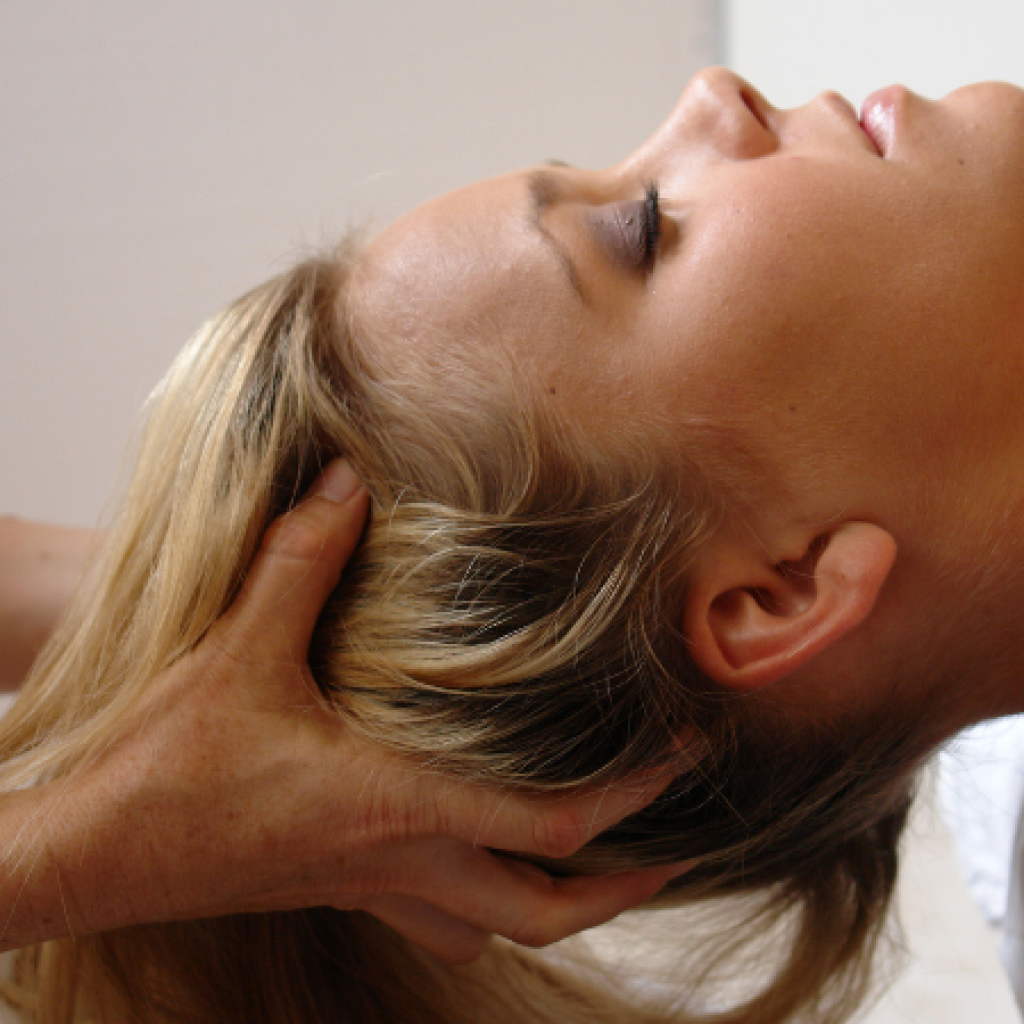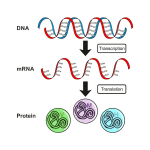Adjunctive Treatment in Holistic Psychiatric Care
JAYNE DUBOIS, ND
Craniosacral therapy (CST) is a gentle but powerful form of bodywork derived from osteopathic manipulation. Treated areas include the cranium and sacrum as well as joints, muscles, fascia, cardiovascular structures, and abdominal organs.1 Designed to enhance the flow of cerebrospinal fluid, its practice is based on the philosophy that the body’s homeostatic mechanism can be harnessed to reduce sympathetic arousal and relax structures restricted by tension patterns. Manual manipulation of this system can have profound effects on the sensory, motor, cognitive, and emotional processes of the nervous system. By encouraging general relaxation through gentle touch and a therapeutic witness, its benefits have the potential to far exceed its mechanistic effect.2
History of CST
William Sutherland, DO, was a central figure in the development of CST. As an osteopathic student, Sutherland was struck by the idea that the sutures of the cranium resemble gills of a fish; they somehow seemed designed for a type of respiration. He strove to prove the mobility of cranial bones experientially by wrapping his head with linen bandages and leather straps. Some formations of this type of helmet produced symptoms like headaches, digestive upsets, and disorientation. Other formations produced a pronounced sense of relief, which led him to investigate the conclusion that cranial movement serves a physiologic function.3
While the practice of cranial manipulation was not new to the rest of the world, Dr Sutherland was instrumental in ushering these ideas into American osteopathy until his death in 1954. His contributions to the world of osteopathy included the foundation of the first osteopathic school in the United States. In the 1970s, John Upledger, DO, was the first practitioner to begin teaching cranial manipulation to laypeople not trained in osteopathy. He coined this practice “craniosacral therapy.” This was met with considerable opposition from the professional osteopathic community.3
Since then, 2 sects of craniosacral therapy have emerged. The biodynamic theory of craniosacral therapy focuses on the underlying forces that govern how we function, particularly fluid flow. The biomechanical style of craniosacral therapy focuses on the results of these forces, particularly tissue tension. Michael Kern, a specialist in craniosacral therapy, writes that “we could say that biomechanic treatment works more from the outside-in, whereas biodynamic treatment works more from the inside-out”.3
Mechanism of Action
The craniosacral system is a semi-closed hydraulic system. It includes the brain and spinal cord, dura mater and dural sleeves, cerebrospinal fluid (CSF), the bones to which the dura mater is attached (the cranium, sacrum, and vertebrae), and the sutures connecting these bones. The dural membrane system, known as the reciprocal tension membrane, includes the spinal dura, tentorium, and falx cerebri.
The flow of CSF is produced by both the choroid plexus within the brain’s ventricular system and the arachnoid granulation bodies. It can be adjusted by intracranial membrane tension patterns, which are broadcast by the falx cerebri and tentorium cerebelli to an aggregation of arachnoid granulation bodies.2 The craniosacral primary respiratory mechanism is composed of 5 separate elements: CSF fluctuations, neural motility (ability to move), tension membrane mobility (ability to be moved), articular motility of cranial bones, and mobility of SI joints. Systemically, this manifests as a bioelectrical matrix organized around the midline of the body,3 which organizes and integrates fluid and tissue systems.
CSF provides buoyant support and shock absorption to the brain while serving as a transport medium between the blood and brain. The CSF is an electrolytic environment that serves to distribute nutrients, remove waste products, and transport cellular signals such an hormones, neurotransmitters, and other neuropeptides.4 Its movements are low in velocity and pressure, allowing it to behave like water.5 There is no circulation pattern – instead, it fluctuates in biphasic tides.4 While oscillations of the brain are synchronous with cardiac systole and respiratory rhythms, the pulsations of fluids are mediated by the autonomic nervous system and reflect its level of balance. These pulsations, known as Traube-Hering Mayer (THM) waves, cause propagation of intracranial pressure called C waves that manifest as a rhythmic oscillation, expressing the living nature of the system.4
Disruption of the normal flow of CSF is believed to induce chronic pain and illness. Cranial manipulation has been shown to affect THM oscillation by reducing tension in the dural tube and thus liberating the flow of CSF. This likely enhances the propagation of C waves through the CSF.4
Use in holistic psychiatric care
CST is useful as a primary treatment modality and as an adjunct to a wide variety of visceral, neurological, and musculoskeletal dysfunctions. It works well to balance autonomic function, specifically reducing sympathetic tone.4 Furthermore, neuroscience has firmly established the important role of touch in humans as social creatures. For example, light touch can have anxiolytic effects; it can promote relaxation and feelings of pleasure and well-being.4
While conventional Western medicine often strives to eliminate symptoms, the required participation of the patient in CST treatments promotes more of a collaborative approach to the healing process. This is partially because assessment and treatment are occurring simultaneously.2 In creating a therapeutic “container” for spontaneous symptom resolution, somatoemotional release commonly occurs in craniosacral therapy and can be quite effective in alleviating the emotional pain centered within somatic tension patterns.
Evidence for CST
In a prospective cohort study examining the effects of CST in a variety of issues seen in the primary care setting, patients reported that it modulated symptoms related to their mental and emotional health issues. They also experienced enhanced body perception and awareness, thus fostering feelings of appreciation and well-being. Further improvements also included a decrease in general tension, more flexibility, improved sleep patterns, and fewer episodes of discomfort or pain. This was true even when the impact of CST on a single symptom did not reach the level of statistical significance. The overall effect of CST on quality of life and personal resources (such as self-love and coping strategies) was a significant improvement.1
In a qualitative study conducted in Norway that combined craniosacral treatments with psychotherapy, researchers posited that complex trauma is not suitable for large randomized controlled trials due to the small and heterogeneous nature of the patient population when studying the effects of trauma.6 Further, quantitative research conditions required for a randomized controlled trial have the potential to produce ethical challenges when carried out on groups of these exceptionally vulnerable patients.
To make psychotherapy more effective, study researchers chose to add somatic therapy as a “throw-in.”6 This was based on the theory that experience is stored in the tissue, though in the case of trauma this is confounded by the fact that many people are trying to escape these embodied experiences. To further complicate the mission, physical pain makes it difficult to stay cognitively present enough to process emotions in an endeavor such as psychotherapy.
The aim of treatment was to help patients to find meaning from their traumatic experiences and develop a higher emotional tolerance. By providing symptom relief, treatment could increase a patient’s pain endurance and avert self-destructive behaviors. Patients could then understand that the pain is not permanent. Further, they could become more conscious of how profoundly the body and the emotions can affect each other.6
Patients and observing practitioners reported improved sleep quality, more focused attention, and the ability to take more pleasure in activities that might previously have caused fatigue. Patients also demonstrated a stronger ability to disengage from destructive relationships and modify negative behaviors.6
Finally, a small 2017 Italian study found a way to reduce the risk of psychological injury during the investigation process by studying 20 healthy adult male participants after an acute psychological stressor (a 5-minute arithmetic task performed in front of a committee).7 This was immediately followed by 20-minute craniosacral osteopathic manipulative therapy (OMT) or sham therapy sessions. Heart rate variability (HRV) and salivary cortisol were tested throughout the experiment. The results showed that OMT counteracted the shift toward sympathetic prevalence that would be expected following a stressor. OMT also induced a faster return to baseline and significantly lowered values of salivary cortisol. Study results supported the hypothesis that OMT can positively impact autonomic tone on a level that could decrease the overall risk of morbidity and mortality associated with decreased HRV, among other downstream stress-related disease and physiological dysfunctional associations.7
Conclusions
CST has the potential for wide-reaching therapeutic and preventive effects as a holistic tool to deploy in both the psychiatric and primary care settings, due to its versatility in treating a wide range of physical and psychological symptoms in all age groups. Because of its potent capability to prevent the progression of illness, CST has the potential to not only improve patient health, but to significantly reduce the associated costs of healthcare that keep many patients confined to treatments with less broad-reaching benefits.1 While further study will be needed to confirm results in specific populations, CST should be considered a powerful asset to any holistic practice.
[REFS]
- Haller H, Dobos G, Cramer H. The use and benefits of Craniosacral Therapy in primary health care: A prospective cohort study. Complement Ther Med. 2021;58:102702.
- Umphred DA, Galantino ML. Complementary and integrative therapies: Beyond traditional approaches to intervention in neurological diseases and movement disorders. In: Umphred’s Neurological Rehabilitation. 7th ed. St. Louis, MO: Elsevier; 2020:1060-1098.
- Kern M. Wisdom in the Body: The Craniosacral Approach to Essential Health. Berkeley, CA: North Atlantic Books; 2006.
- Whedon JM, Glassey D. Cerebrospinal fluid stasis and its clinical significance. Altern Ther Health Med. 2009;15(3):54-60.
- Milne H. The Reciprocal Tension Membrane. In: The Heart of Listening: A Visionary Approach to Craniosacral Work. 2, Anatomy, Technique, Transcendence. Berkeley, CA: North Atlantic Books; 1998:14-22.
- Stub T, Kiil MA, Lie B, et al. Combining psychotherapy with craniosacral therapy for severe traumatized patients: A qualitative study from an outpatient clinic in Norway. Complement Ther Med. 2020;49:102320.
- Fornari M, Carnevali L, Sgoifo A. Single Osteopathic Manipulative Therapy Session Dampens Acute Autonomic and Neuroendocrine Responses to Mental Stress in Healthy Male Participants. J Am Osteopath Assoc. 2017;117(9):559-567.

Jayne DuBois, ND, graduated from the Brian Utting School of Massage in 2006 and went on to complete a certification in biodynamic craniosacral therapy with Pat O’Rourke and Matthew Sorlie in 2008. Her training inspired her to expand her scope, and she graduated from Bastyr University in 2018. Dr DuBois practices at In Tune Healing Arts in Seattle, with a focus on mental health, gastrointestinal disorders, and clinical hypnotherapy. Her favorite pastimes include thrift shopping, dance parties, sassing her family and snuggling her pandemic puppy. Find her on Facebook at www.facebook.com/intunehealingarts and Instagram at @dr.jaynedubois.



